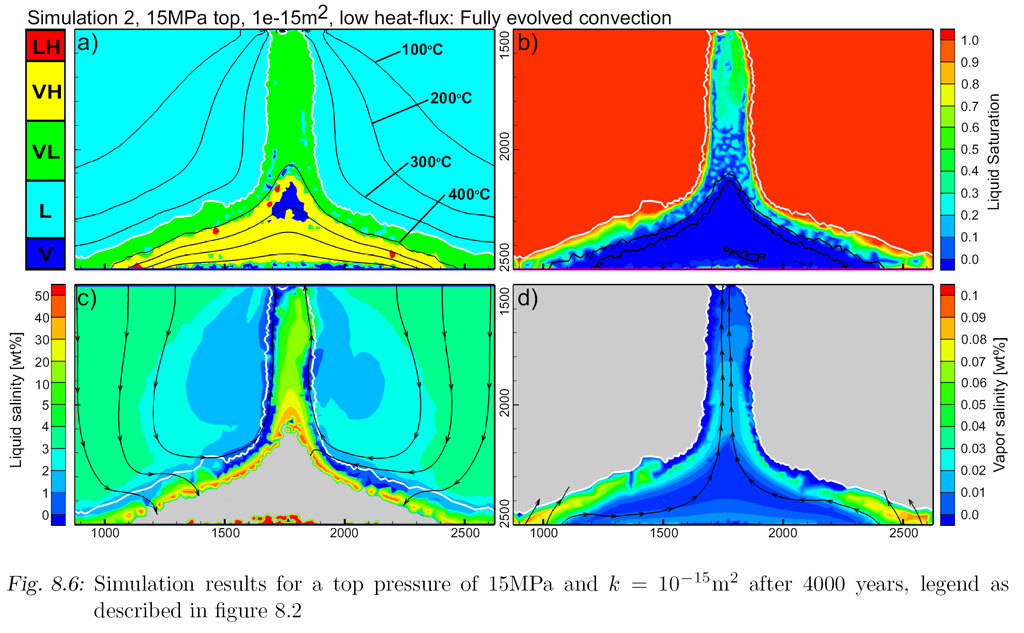Modelling MOR Hydrothermal Systems
Mid-ocean ridges (MOR) are the tectonic setting that is richest in high-temperature hydrothermal systems. On the sea-floor, these systems are marked by fields of hydrothermal vents, known as 'black smokers'. Discharge temperatures are typically between 300 and 400 degrees Celsius. The hydrothermal systems are driven by the heat of magma chambers underneath the spreading centres, and the fluid is seawater that circulates through the crust and becomes chemically modified due to chemical interaction with ocean floor rocks. At a given vent site, temperature and salinity of the discharging fluid may vary substantially on various timescales from days to many years. A number of possible reasons exist, and disturbances of the hydrothermal systems by earthquakes and shallow magmatic intrusions have been discussed as the most plausible scenario.
In the first application of our simulation tools to MOR systems, Dim Coumou (PhD student in our group), found that variations in discharge temperature do not require such "external" forcing. They rather occur naturally and are a consequence of the hydrology of the hot, sub-seafloor part of the systems. Here, the interface between cold seawater in the crust and the hot fluid in the hydrothermal fluid marks a strong viscosity contrast that leads to unstable thermal plumes. In addition, individual plumes show an oscillating thermal structure with time. The period of oscillations is related to permeability and hence also explains why temperature oscillations are more prominent in some types of ridges than in others. For more detailed information, check out Dim's paper.
Coumou D., Driesner T., Geiger S., Heinrich C. A., and Matthai S. (2006) The dynamics of mid-ocean ridge hydrothermal systems: Splitting plumes and fluctuating vent temperatures. Earth and Planetary Science Letters 245(1-2), 218-231.

Dim has in the meantime carried out simulations on the 3D-structure of the hydrothermal convection cells. With an overall domain size of 2.5 Mio. elements, these simulations are really large and require parallel processing, see the respective section on the code development page. The figure shows an example of the 3D thermal structure of a MOR hydrothermal structure. The manuscript is in the process of submission.
Since MOR system involve seawater as the main fluid, additional simulations were carried out in 2D to see how the submarine hydrology is affected by the various phase separation processes. Complex patterns can arise (see top left of composite figure, phase states are: LH - liquid+halite, VH - vapor+halite, VL - vapor+liquid, L - single phase liquid, V - single phase vapor).
Contact
Inst. für Geochemie und Petrologie
Clausiusstrasse 25
8092
Zürich
Switzerland

